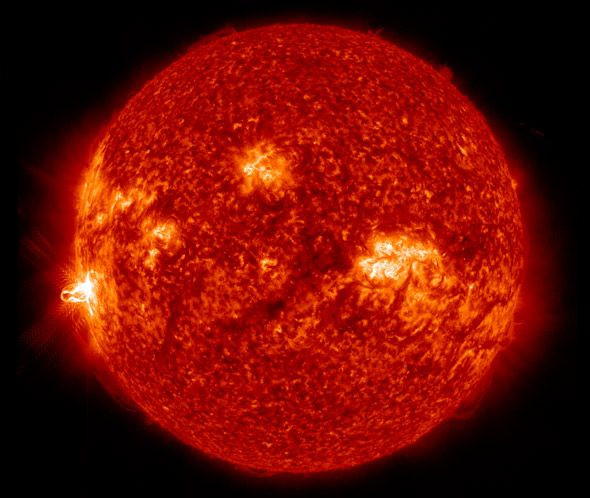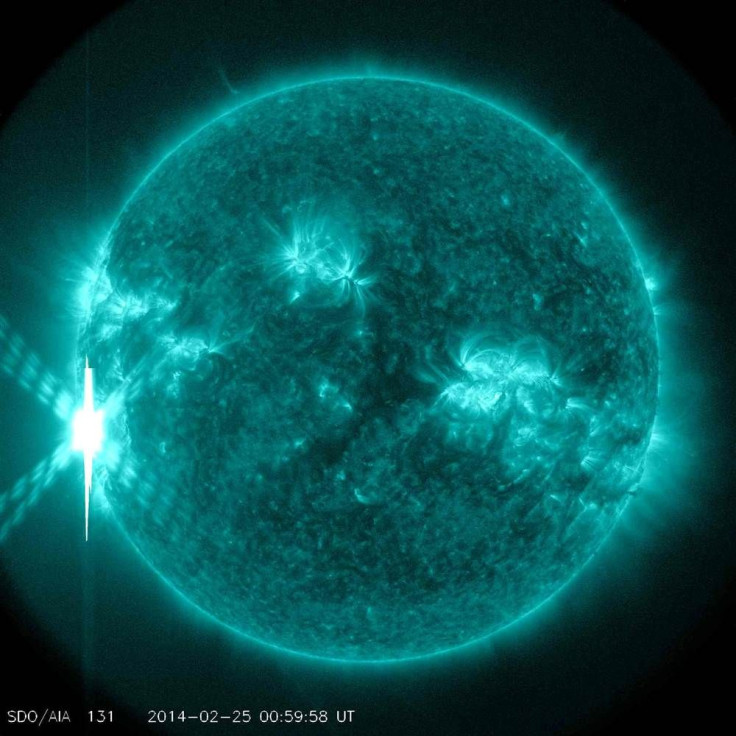Largest Solar Flare Of 2014 Erupts, ‘Impressive’ X-Class Sunspot Set To Return [PHOTOS]

One of the most intense solar flares of the year has been recorded by NASA’s Solar Dynamics Observatory.
The giant X4.9-class solar flare erupted on Monday at 7:50 p.m. EST. Images captured by the NASA telescope show how the sunspot, which emerged from the sun’s southeastern limb, released magnetic energy, leaving a knot of plasma in its wake. Radio emissions from the flare’s shockwaves suggest it had an expansion velocity of 4.4 million miles per hour.
The images show that the flare was not released in Earth’s direction, meaning strong geomagnetic storms aren't expected. However, the solar flare did set off a strong radio blackout, according to the National Oceanic and Atmospheric Administration's Space Weather Prediction Center.
“Although impressive, the source of this event is well off the Sun-Earth line so the coronal mass ejection (CME) associated with this event should not be headed directly at Earth,” the NOAA stated on Facebook.

The eruption was caused by the sunspot AR1967, which has begun its third trip across the Earth-facing side of the sun. Since sunspots are renumbered each time they return, its new name is AR1990 and it has grown to be wider than the planet Jupiter.
Solar flares are giant magnetic energies released at the sun’s surface. Ultraviolet and X-ray radiation from solar flares are usually associated with electromagnetic disturbances in the Earth’s atmosphere.
This particular sunspot is expected to return. Throughout the next week, the sunspot will return to the center of the sun’s disk and eventually go around to the star’s far side, Phil Plait describes in his Bad Astronomy blog.
Solar cycles take place approximately every 11 years. The sun recently hit its peak and while the latest solar flare was massive -- the last cycle hasn’t been as exciting. But space weather forecasters think the following year will be a busy one. They predict that the sun may increase in activity throughout 2014 and create a “double peak” solar maximum.
© Copyright IBTimes 2025. All rights reserved.




















